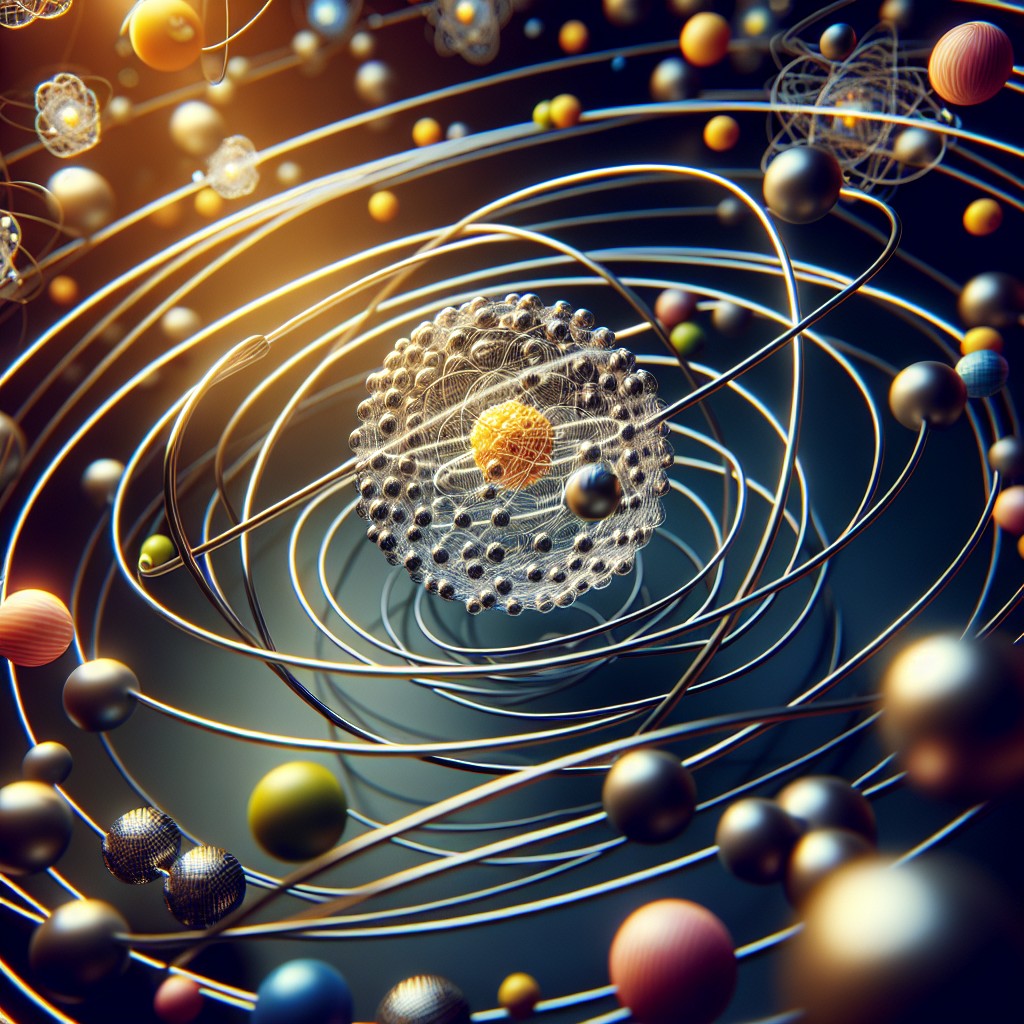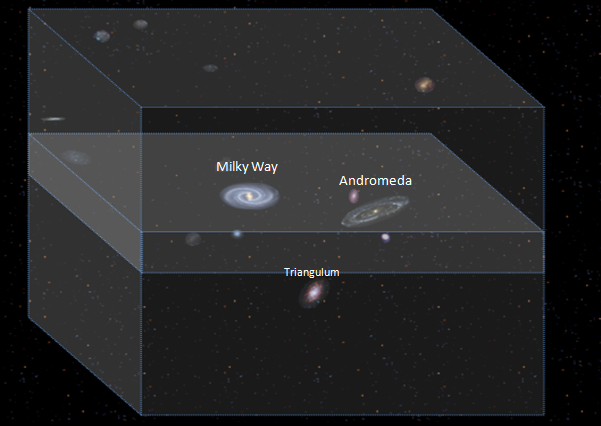Planet Mars is the second smallest planet in our solar system, with a radius that is approximately half of Earth’s.
How Mars got its name
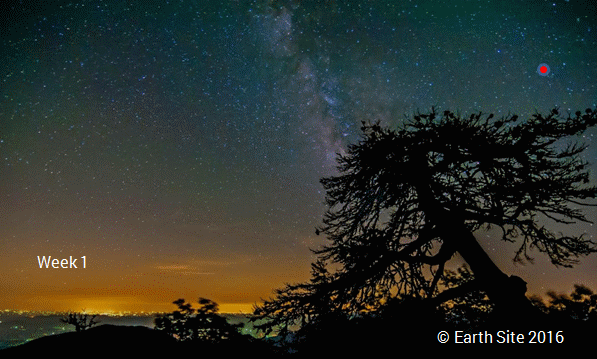
Mars was named after the roman god of war, due to its red colour and apparent erratic movement in the sky. Observing from earth mars appears to travel in one direction, then loop back on itself before traveling on its original path. In fact mars has a perfectly normal orbit, as shown in the animation below, but the combination of both orbits and our position in relation to mars is the cause of this illusion.
Martian Orbit
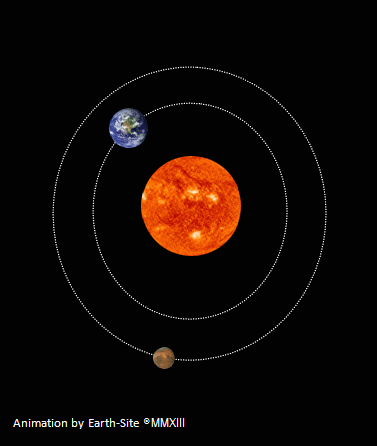
The animation on the left shows the orbits of Mars and Earth to explain the seemingly erratic orbit that was, in part, the reason why Mars was named after the Roman god of war. Initially the planet Mars appears from Earth to be travelling east to west in the night sky of the northern hemisphere. Once the Earth ‘overtakes’ Mars it appears as if Mars jumps back in the opposite direction before continuing in its original path.
This event (known as the Martian retrograde) takes place every 2 years and is only noticeable if the position of mars is plotted over a period of several months.

Surface of Planet Mars
Mars is the second smallest planet in our solar system, with a radius that is approximately half of Earth’s. Its surface area (144,798,500 km² 89,973,616 mi2) a little less than the total surface area of land on Earth (148,940,000 km2 or 57,506,055 mi2)
Also known as the ‘Red Planet’ due to its colouration from the iron oxide (hematite or rust) that covers the surface.
Martian Weather
Planet Mars, like Earth, has a tilt on its axis known as its obliquity, Earths tilt is currently at 23.44 degrees while the planet Mars has an inclination of 25.19 degrees. Its Earths obliquity which gives us our seasons however the seasons on Mars last much longer than ours. This tilt has caused ice deposits to form on its poles which, like on Earth, grow and recede with the seasons.
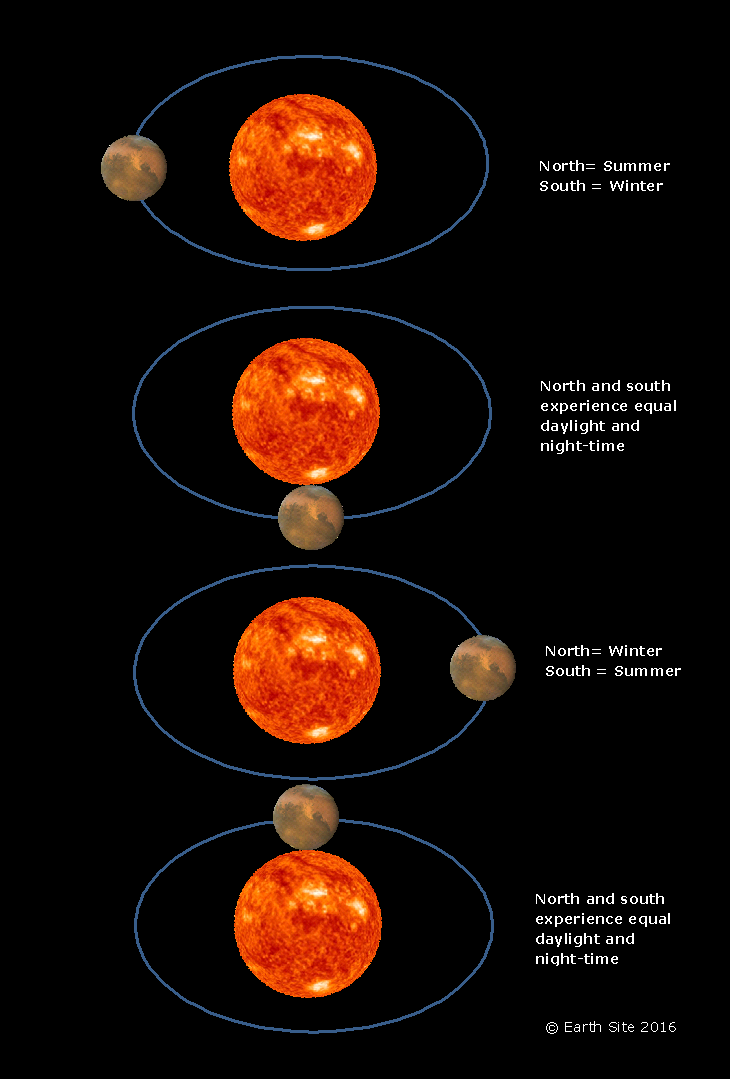
In 2008 NASA’s Mars Phoenix Lander not only found water at the North Polar Region but observed precipitation, similar to snow, falling from clouds. Analysis of soil in that region suggested that this was a relatively new climate which would have been warmer and wetter a few million years before.
Life on Mars

On the 6th of December 1906 the article above appeared in the New York Times. Percival Lowell, probably most famous for his work in discovering Pluto, was one of many astronomers that had seen lines across the face of planet mars. Like Italian astronomer Giovanni Schiaparelli, who saw this phenomenon in 1877, Lowell was convinced that they were canals built by an advanced civilisation.
On Earth the Suez Canal, one of the greatest engineering feats of the time, was completed on the 17th of November 1869. It linked the Mediterranean Sea with the Indian Ocean allowing merchant ships to trade between Europe and Asia without having to travel around the African continent. And by 1903 work had begun on the Panama Canal which would allow ships to travel between the north and South American Continents. The use and growth of canal networks had also been vastly increased throughout the civilised world for use in industry and these canal networks created many criss-crossing straight lines in the landscape similar to those witnessed by astronomers on the face of mars.
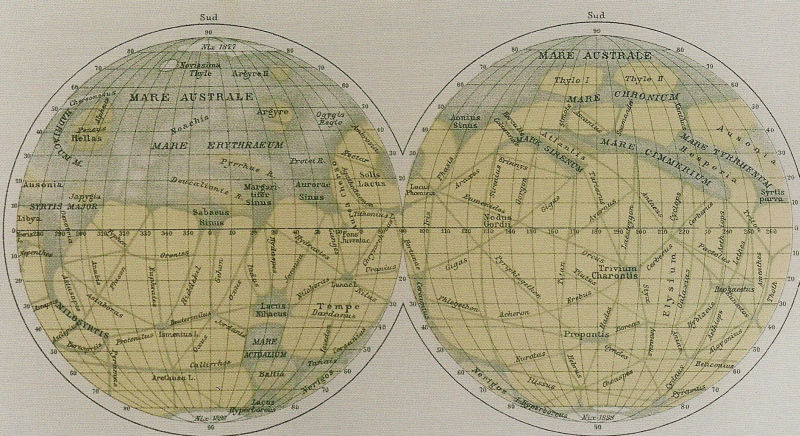 Schiaparelli’s map of the Martian canals from 1892 (public domain image).
Schiaparelli’s map of the Martian canals from 1892 (public domain image).
Since the 1960’s NASA has been spacecraft to the planet and we now know that these canals, and indeed civilisations do not exist on mars. The canals seen by many observers were no more than an illusion created by the brain. Even the very best telescopes of the day were not able to show mars in great detail and the brain attempted to form the best image it could.
Many probes and landers have visited the planet but no signs of life have been found or that life could exist on mars. That is not to say that there was never life on mars.
Curiosity Rover
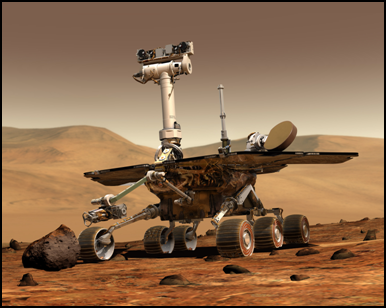
In August 2012 one of NASA’s Mars rovers named Curiosity landed on the Martian surface in the Gale Crater. Its chief mission was to determine the habitability for life on Mars; a feat NASA scientist hoped Curiosity would accomplish mid-2013. However on the 9th of February 2013 the mars rover was drilling and analysing rocks in an area known as Yellowknife Bay, an area believed to be an ancient streambed.
Analysing the rocks on Curiosity’s on-board laboratory the samples showed to contain 20% and 30% smectite which is a clay mineral that forms when water is present. Curiosity also detected minerals that indicate the water could have carried energy suitable for microbes as well as a neutral ph.
It is believed that this life supporting water would have been a liquid on the surface of Mars, billions of years ago, during a time when on Earth life would have just started. This water has since been lost due to the reduction of the Martian atmosphere and magnetosphere.
In March 2013, at a meeting in Texas, analysis was presented from three different Mars rovers showing hydrated minerals scattered throughout the Yellowknife Bay region.
John Grotzinger, a project scientist at NASA beliefs the water to be “so benign and supportive of life that probably if this water had been around and you had been on the planet, you would have been able to drink it”.
If this is the case it may prove valuable to the possibility of one day colonising the Red Planet. It is now believed, due to discoveries by Odyssey, that there is much frozen water below the surface of Mars, which if drinkable, could be drilled and used to support life today. The hope is that if the indications are correct and the water on Mars was once safe for us to drink then so may be the water locked under the Martian surface.
Where in the Solar System?
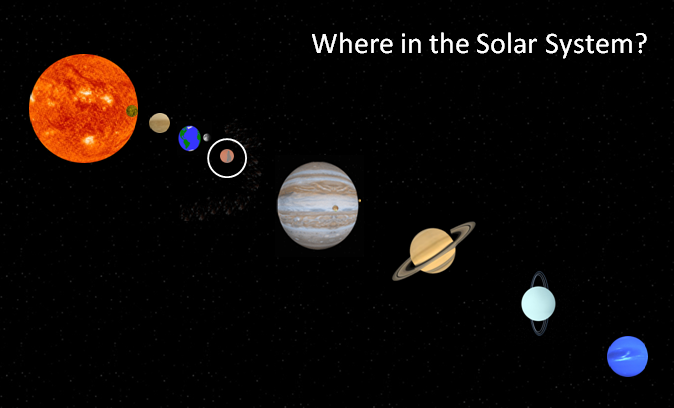
|
2 |
|
|
Rings |
0 |
|
Orbit Period |
686.98 Earth Days |
|
Rotation Period |
24.62 Hours |
|
Equatorial Radius |
3,397 km (2,111 miles) |
|
Overall Density |
3.934 g/cm3 |
|
Mass (Earth = 1) |
0.10744 |
|
Gravity (Earth = 1) |
0.38 |
|
Minimum Temperature |
-87°C (-124°F or 186 °K) |
|
Maximum Temperature |
-5°C (23°F or 268 °K) |
